The ramie fiber (Aoso) is in the inner bark of the stem. The thread is made by stripping the fiber into thin strips and joining them together by hand. “ Split ends” will form when stripping off the fiber. In order to be lain the split ends, the end of the fiber is joined with the root of the other. If it’s upside down, the finished result will not good looking. This is the reason why ply-joined thread are in a certain direction. Especially when using twistless thread, it must always be pulled out from the beginning inside.
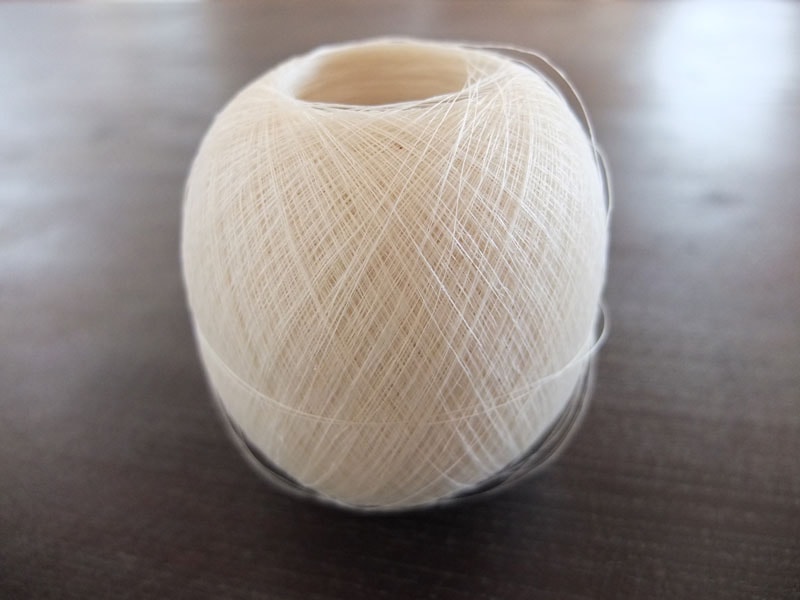
Sichuan Ultra Fine Thread (130 pieces)
JPY 242,000 / kg [10g = approx. 770m]
It is a twistless single thread made for Kimono cloth. Ply-joined for the warp.The number 130 represents the fineness of the thread, and is the amount of the “warp” and the “weft” that takes to make a 1 inch (approx. 2.54cm) square.If the number is approx. 120 – 140 threads, it will be called 130 pieces.
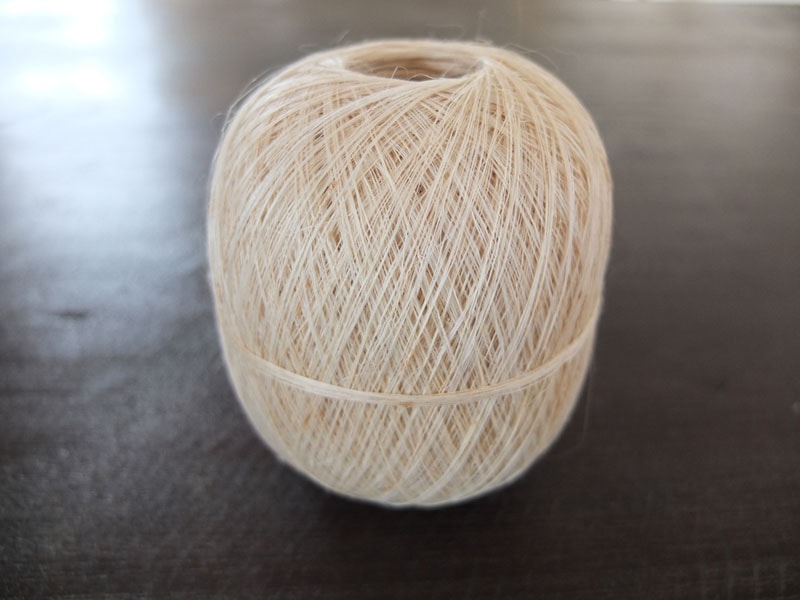
Sichuan Extra Fine Thread (110 pieces)
JPY 74,800 / kg [10g = approx. 350m]
It is slightly thicker than 150 pieces, and it is made for Obi. It is a twistless single thread.
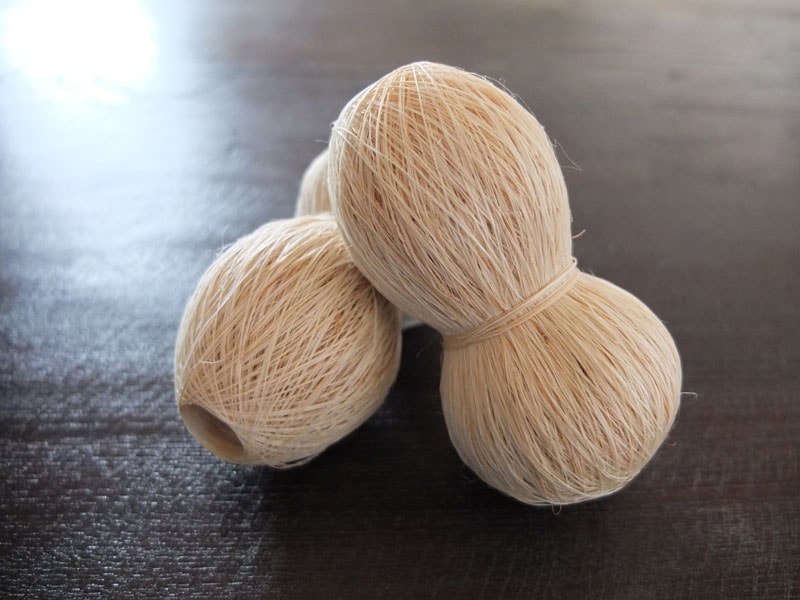
Fine Thread
JPY 47,300 / kg [10g = approx. 126m]
JPY 1,430 / each [approx. 15g]
The thread used to weave the standard “Kibira-Asa” (a ramie cloth that has not been bleached).To be able to weave also the warp and the weft, twistless fine thread is all thanks to the techniques passed down the generations. This gourd-like shape is made by winding up the finished thread to a 15cm bamboo stick in a clockwise direction, and then firmly binding it in the middle.
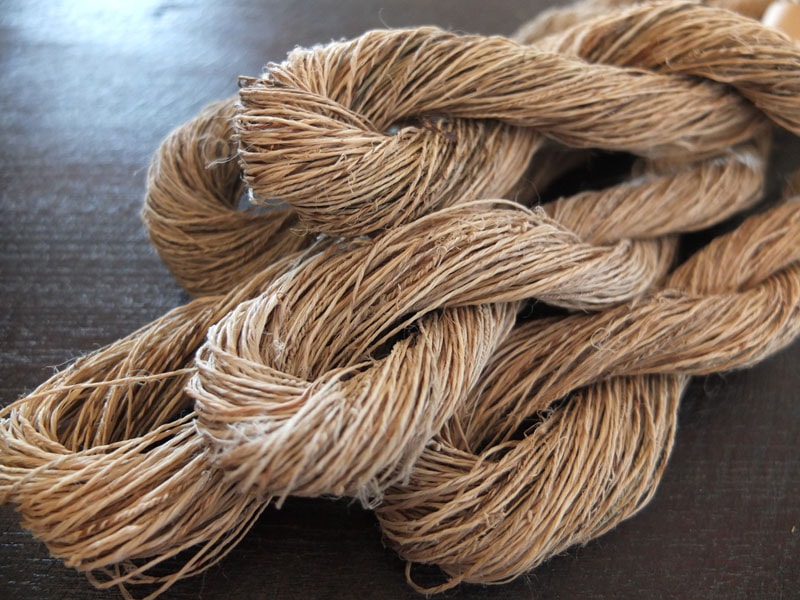
Medium-sized Thread
JPY 33,000 / kg [10g = approx. 70m]
Out of the ply-joined Asa threads, this is a convenient size and is the easiest to use. It is twisted, so it can be used for the warp of Obi or tapestries. One can enjoy it in a different way by using it for knitting.
(Skein-Circles [The length per one reeling]: approx. 1.25m)
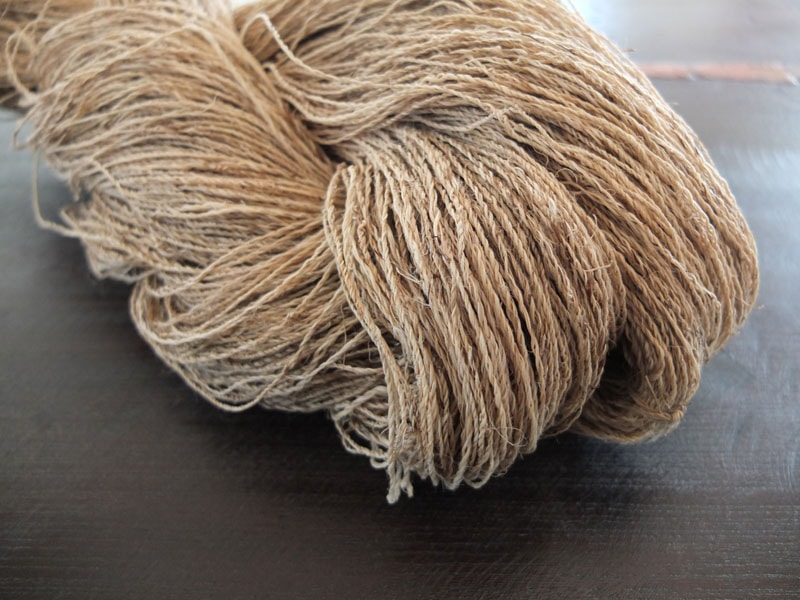
Thick Thread
JPY 29,700 / kg [10g = approx. 21m]
It is twisted, so it can be used the warp of centerpieces and tapestries.
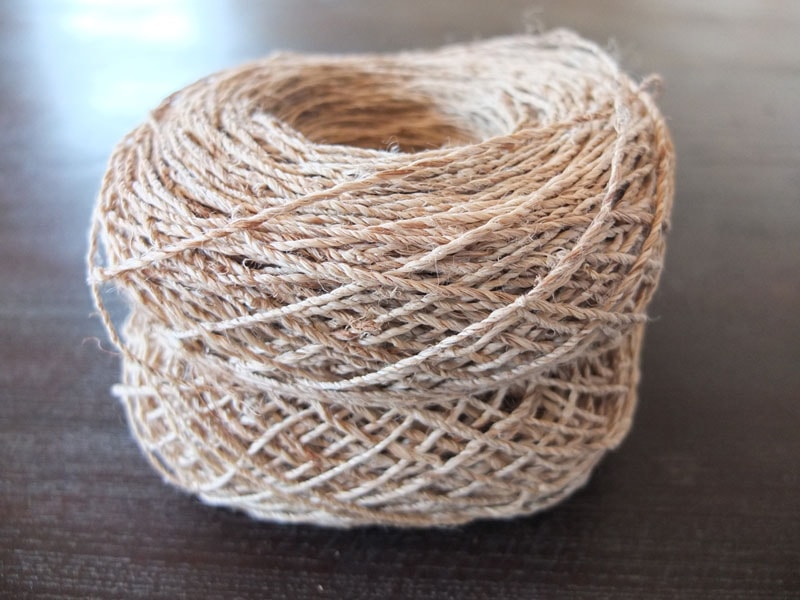
Soft Thick Thread
JPY 29,700 / kg [10g = approx. 21m]
JPY 1,100 / each [approx. 17g]
The thick thread that is known to be stiff has been stepped on and softened. For knitting and wrapping.
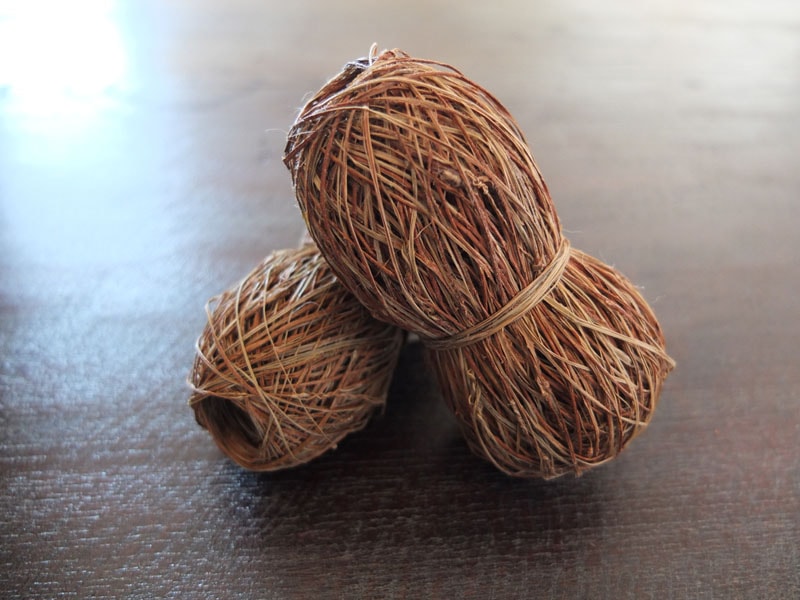
Outer Bark (Mapi) Thread
JPY 29,700 / kg [10g = approx. 42m]
JPY 1,100 / each [approx. 14g]
When one door is shut, another is open. We recycled the outer bark of the ramie as a thread instead of throwing it away. If used as an accent to the weft, it gives an interesting pattern.
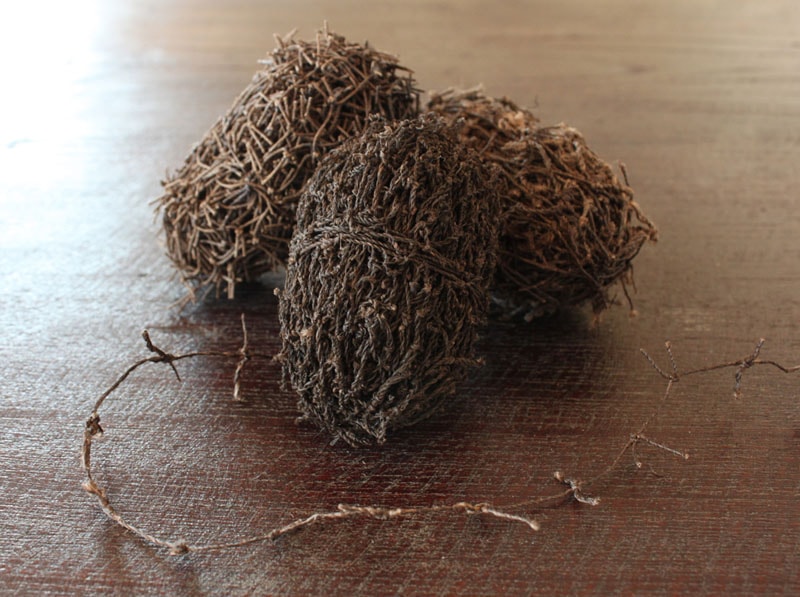
Fishnet Thread
JPY 2,200 / each [approx. 10g]
The ramie thread which gets stronger when wet, was also used for fishing nets. The strength is increased by persimmon tannin (the astringent juice of the persimmon fruit) and mudding. When the net gets old and worn out, it gets cut and returned to a thread. This thread is a reminder of the olden days when people use to take great care of things.
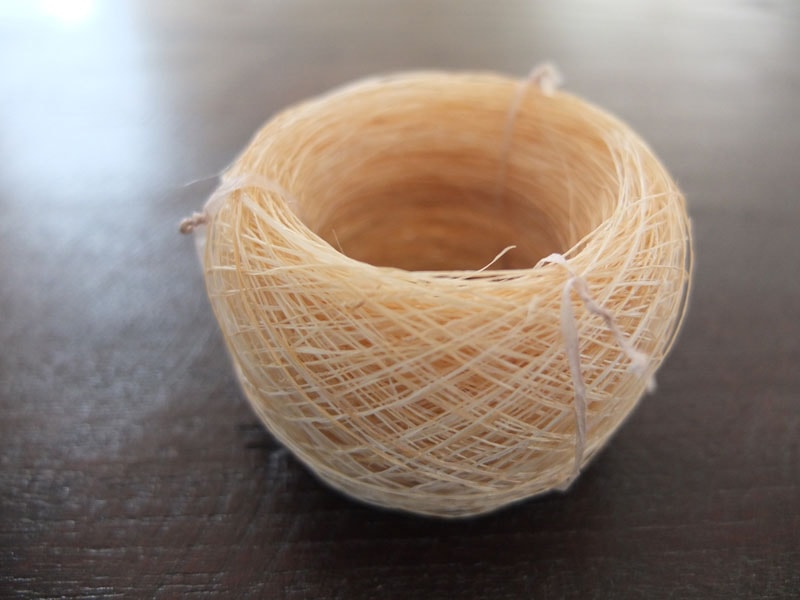
Hemp – Extra Fine Thread
JPY 1,320 / each [approx. 5g]
A modest yet refined presence. It tends to be overlooked due to its lack of noticeability in appearance and color. But once used, it’s surprisingly light, flexible and easy to manage.
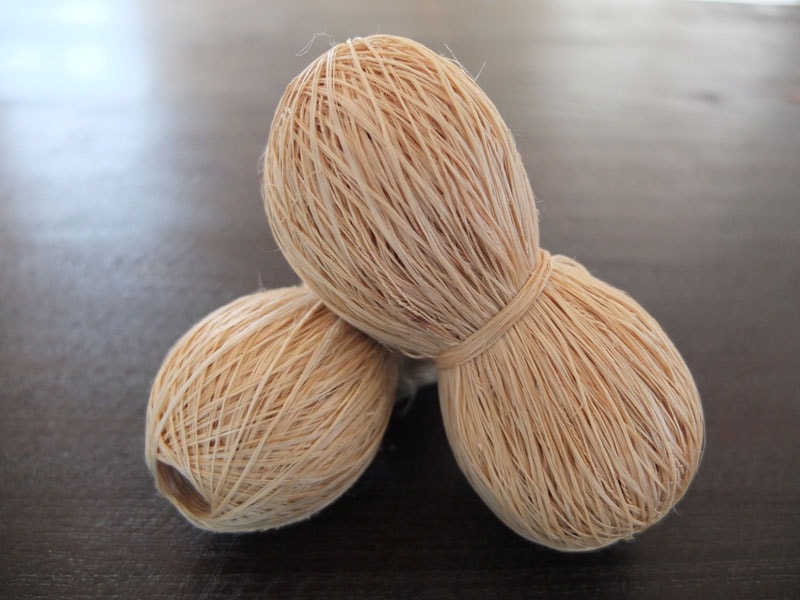
Hemp – Fine Thread
JPY 58,300 / kg
JPY 1,650 / each [approx. 18g]
The original thread was supposed to be hemp...However, it is sad we rarely get to see ones we can use nowadays. So here it is, a twistless single hemp thread.
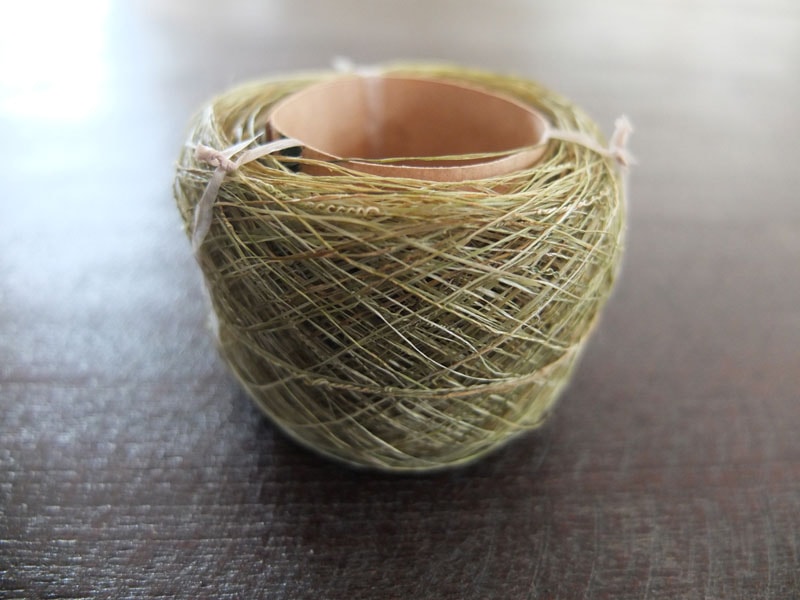
Green Hemp – Extra Fine Thread
JPY 1,080 / each [approx. 12g](Discontinued)
More than 10,000 years ago, hemp had come all the way from the Eurasia across the sea to Japan. This green thread is the hemp of the Hmong people, also originating from Central Asia. Despite both being hemps, they differ in “personality”. Anyway, what an enchanting color.
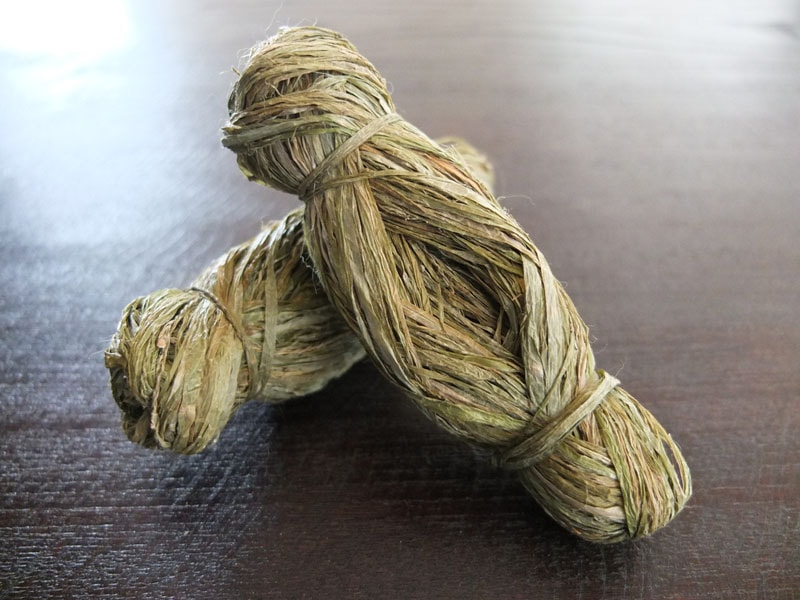
Green Hemp Thread
JPY 770 / each [approx. 6g]
The reason for this shape is so that it can fit inside a shuttle (of a loom). The beginning of the thread is pulled out from the naval-like area in the center. Anyway, what an enchanting color and shape.
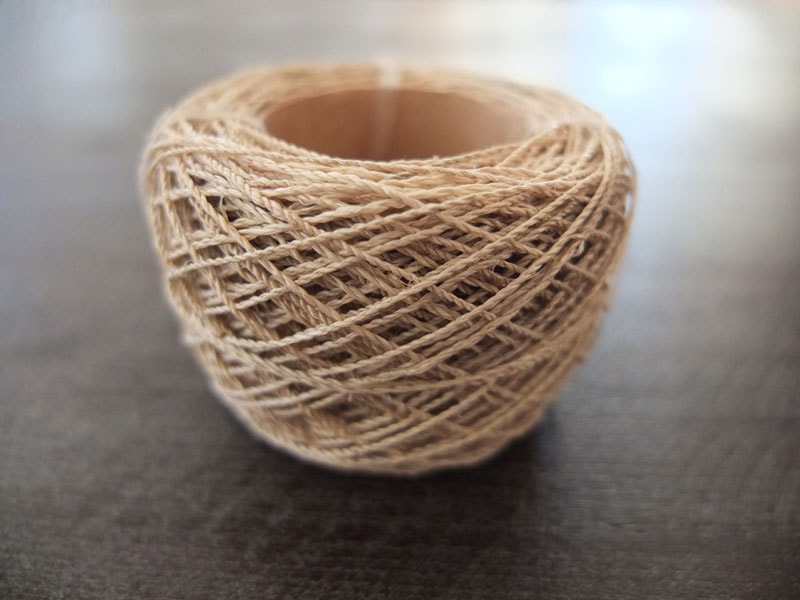
JPY 1,540 / each [approx. 11g]
Out of all the Asa, Kudzu has the most outstandingly strong and beautiful shine. It’s strong vitality, splaying itself all over the summer bushes, could still be felt even after they have been turned to thread. It is flexible, light and beautiful.
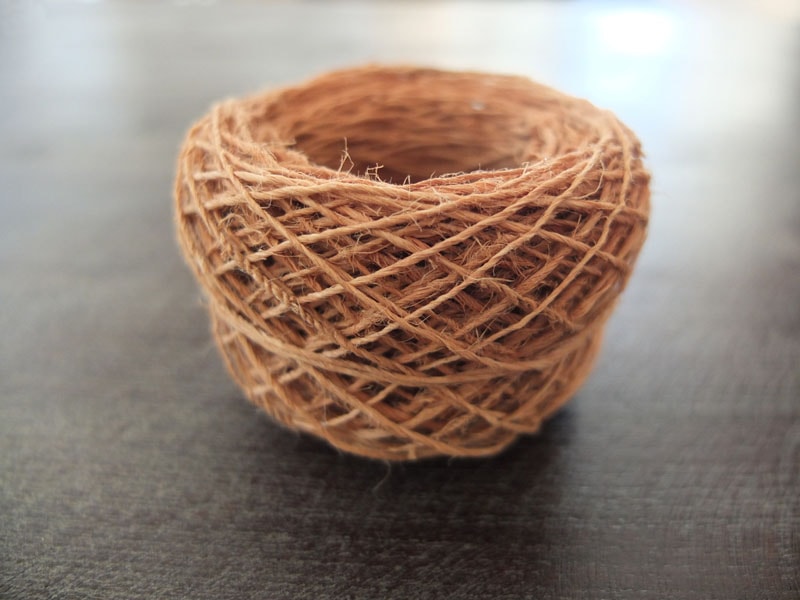
JPY 1,430 / each [approx.10g]
When it comes to Japan’s linden cloth, this color is its charm. However, when the fiber is just pulled out it fresh, milky white color. It turns into this caramel brown color via boiling with lye. However in Laos this thread is this color from the start, only a little lighter. Truly impressive!
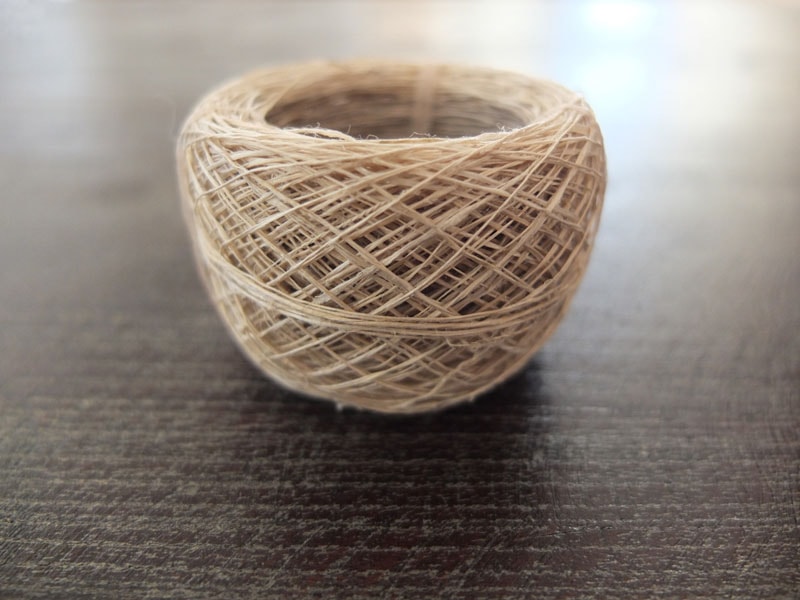
JPY 1,320 / each [approx. 7g]
Although it is known as a material for making paper, long ago it used to be a material for cloth (Tafu), along with wisteria and hemp.
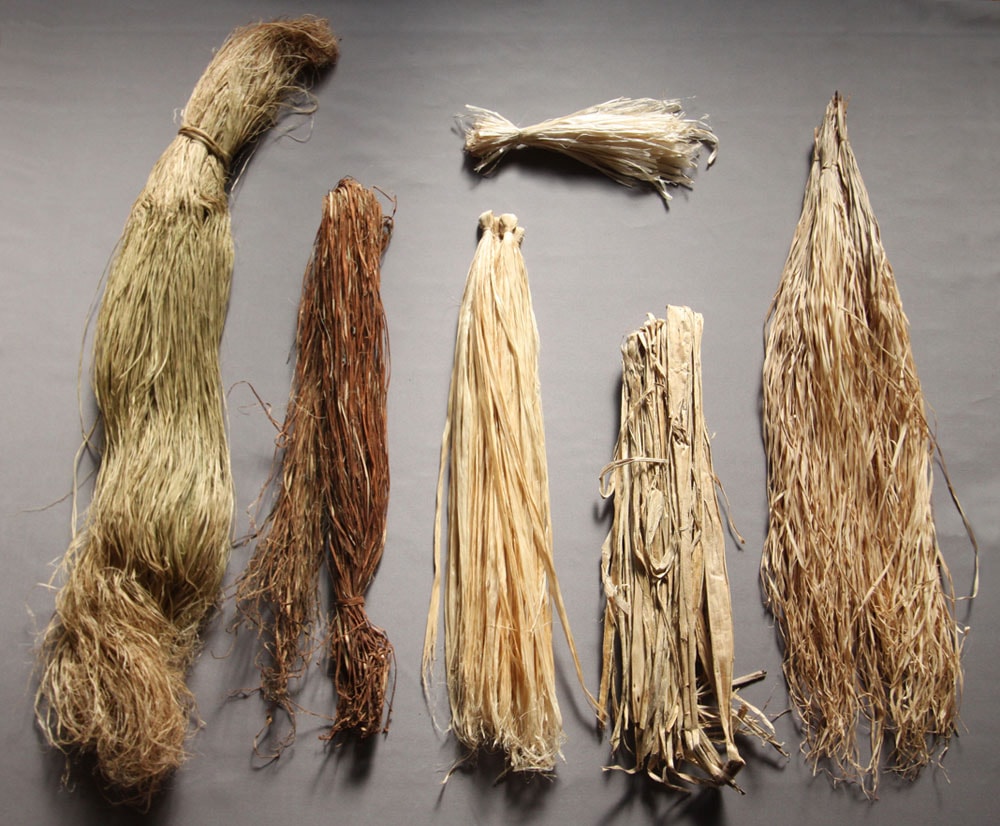
1.
Aoso (Ramie Fiber)
2.
Mapi (Outer Bark of Ramie)
3.
Asao (Hemp Fiber)
4.
Paper Mulberry Fiber
5.
Gebang Fiber
6.
Kudzu Fiber
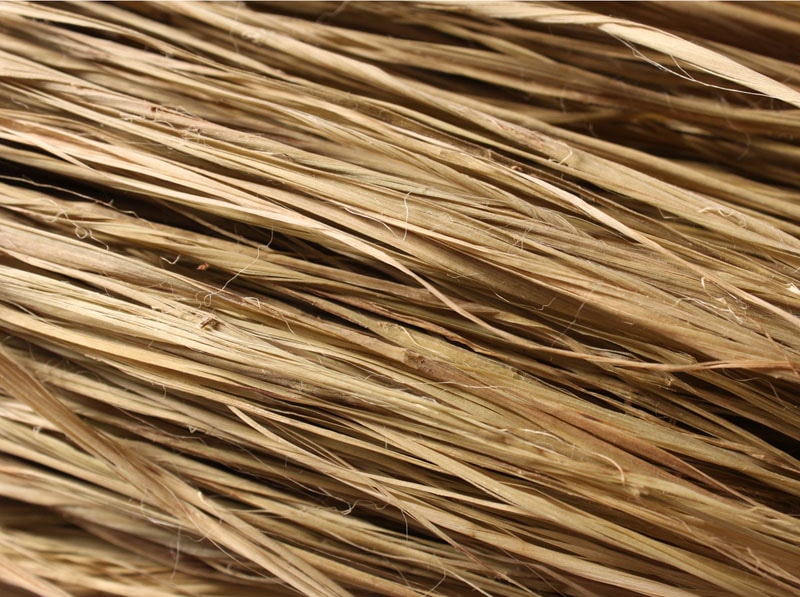
Aoso (Ramie Fiber)
JPY 18,700 / kg
JPY 1,650 / Bundle [approx. 50g]
In China they are harvested three times a year from June – October. Freshly harvested ramie have a lovely green color and a good smell. The fiber is also soft, making it easier to make fine thread. Wild ramie are actually pretty common in one’s surroundings, so you could collect your own fiber as well.
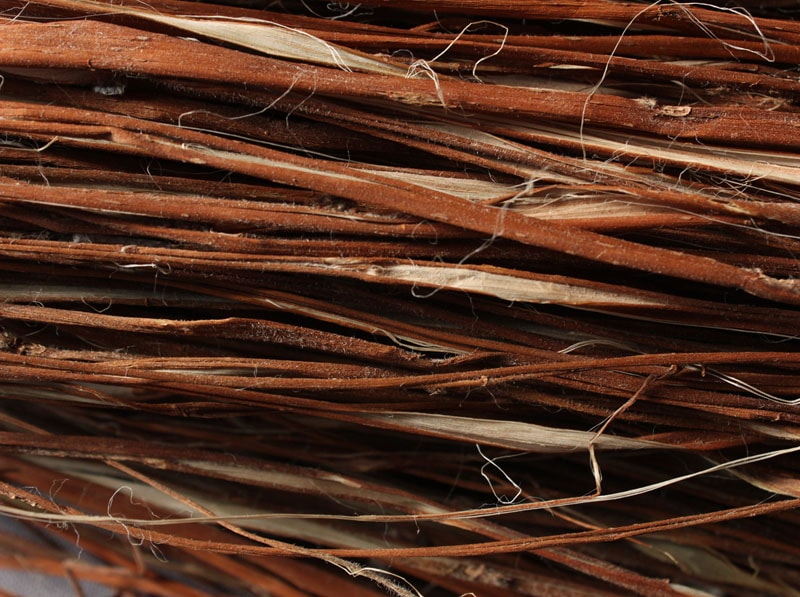
Mapi (Outer Bark of Ramie)
JPY 18,700 / kg
JPY 1,320 / Bundle [approx. 40g]
The outer bark of the ramie. To prevent breakage, some fibers are left on when scraping. Usually the outer bark gets disposed, but this dark brown color is quite interesting. It can be used for making baskets, or it can be used as an accent to the “weft”. Make sure to soften the bark by soaking it in water before use.
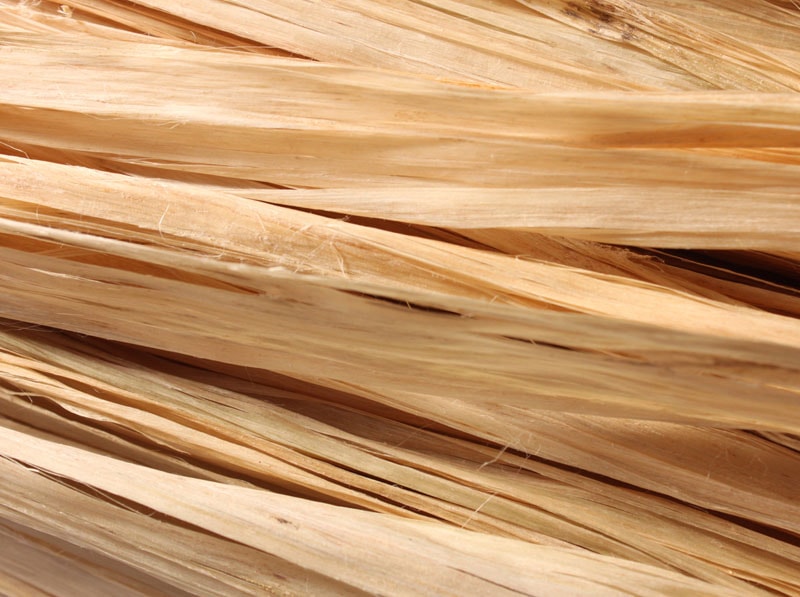
Asao (Chinese Hemp Fiber)
JPY 25,300 / kg
JPY 1,650 / Bundle [approx. 45g]
The fiber does not have any medicinal effects. The connection between hemp and the lifestyle of the Japanese people, have been around since long ago. It has been used for the “Suzu-nawa” (the rope attached to a large bell) of shrines, and also for “Hei” which Shinto priests use to purify.
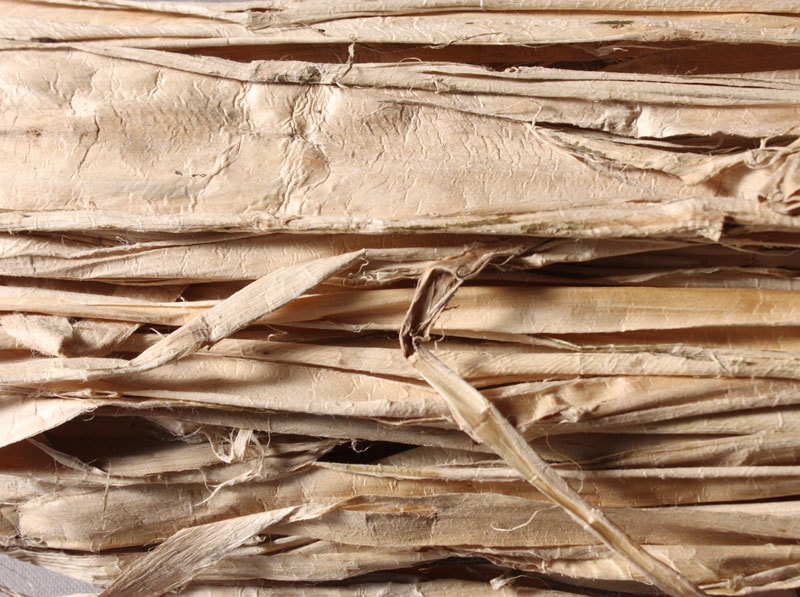
Paper Mulberry Fiber
JPY 1,100 / Bundle(Discontinued)
Although it is known as a material for making paper, long ago it used to be a material for cloth (Tafu), along with wisteria and hemp.
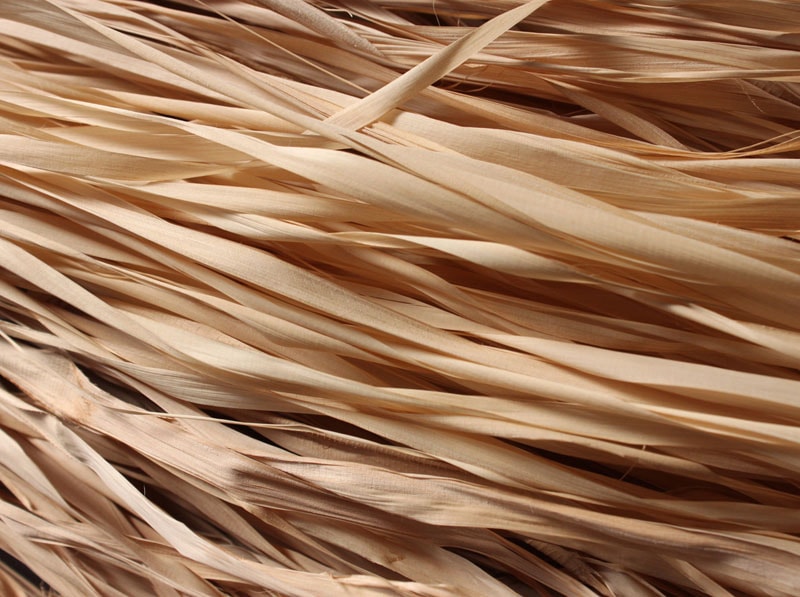
Gebang Fiber
JPY 1,100 / Bundle [approx. 15g]
This is the fiber used for “Kasuri” resist dyeing in the island of Sumba, Indonesia.
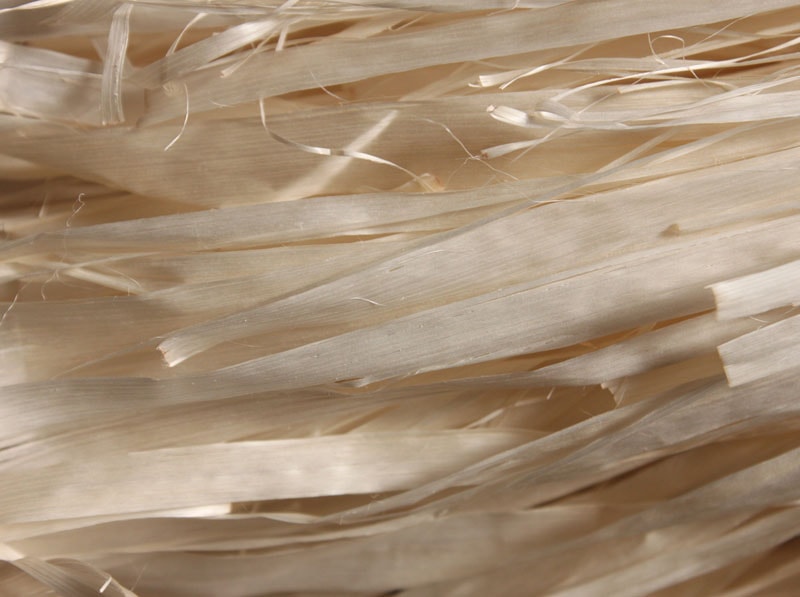
Kudzu Fiber
JPY 1,100 / Bundle [approx. 4g]
Out of all the Asa, Kudzu has the most outstandingly strong and beautiful shine. It is flexible, light and beautiful.